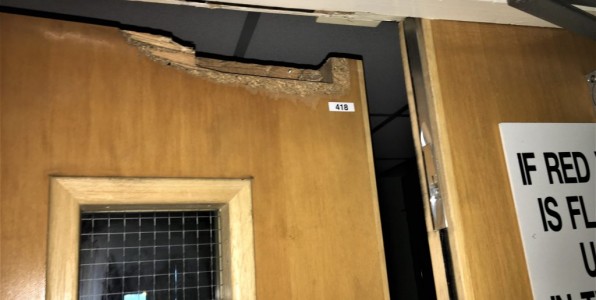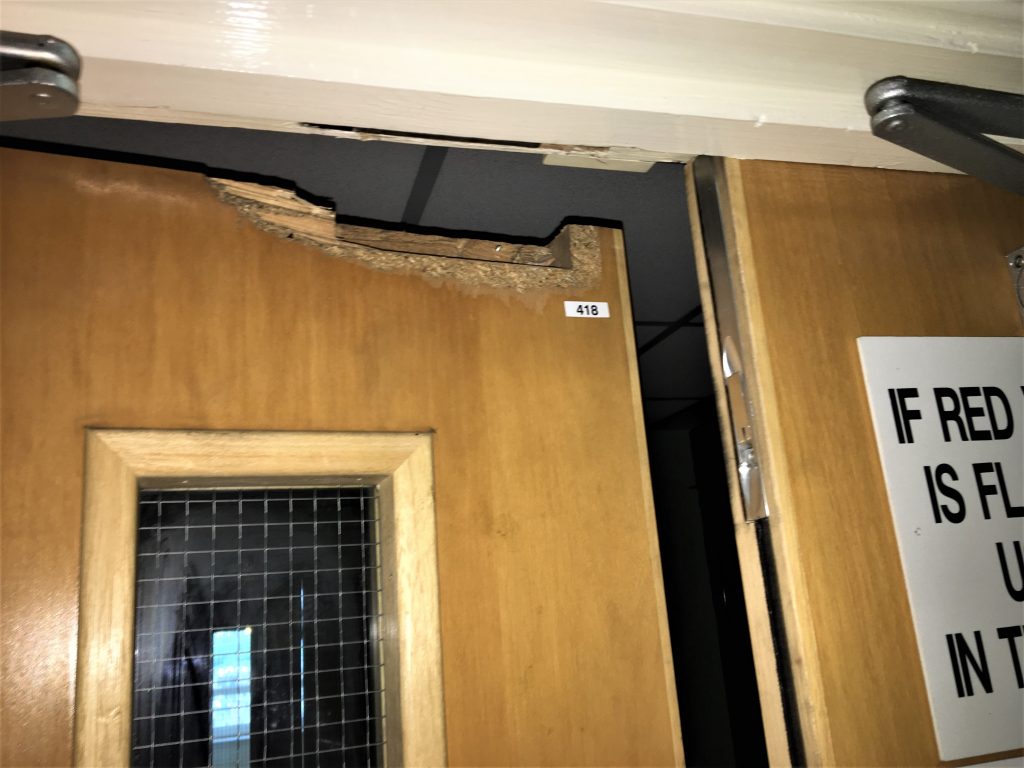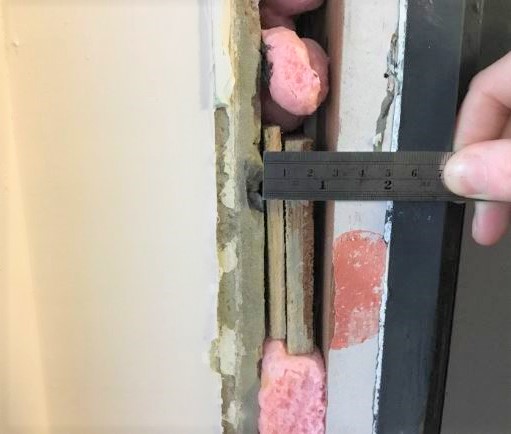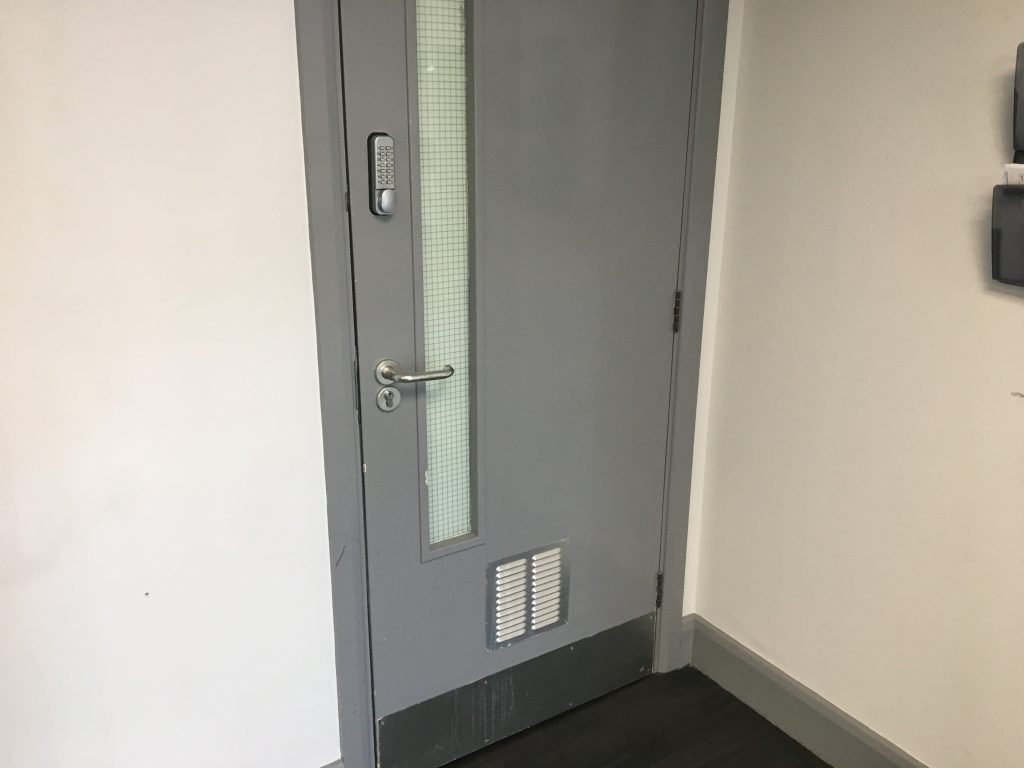Trident slams the door on fire

Trident slams the door on fire
Evidence
continues to pile up about continued fire door failures in residential and
commercial property, according to Trident Building Consultancy.
As Fire
Door Safety Week takes place this week, two of Trident’s building surveyors
have catalogued the most common fire door defects they find when undertaking
inspections.

Since the
Grenfell Tower tragedy, Trident has been working on a number of projects where
buildings have required replacement cladding and updated fire risk assessments.
This work has also revealed hundreds of failing fire doors.
One project
included multiple residential tower blocks. An intrusive survey was carried out
on a sample of seven fire doors per each block. Architraves were removed to
expose the detailing between the door frame and structural opening to allow the
surveyor to cross check it with requirements of the fire test evidence. The
survey found that the door frame installations were not compliant with the
relevant test evidence and wouldn’t provide the required period of fire resistance.
This defect, among others found, resulted in all of the fire doors and frames
needing to be replaced.

Christian
Watkins, an assistant building surveyor at Trident who worked on the project,
said:
“It was
shocking to see that every single one of the sample fire doors we inspected was
non-compliant. Once the architrave was removed, we could see the back of the
door frame was packed with pink foam. This wasn’t going to act as any sort of
barrier and clearly wasn’t in accordance with the test evidence for the fire
doors. These buildings were only refurbished in 2015.�
Further
failings that Christian Watkins and Trident executive director, Matt Clare,
have recorded on a regular basis included:
- Lack of maintenance records.
- Missing or painted intumescent seals, which compromises
fire resistance. - Fanlight windows above doors being replaced with
plywood, which doesn’t offer the fire resistance needed. - Integrated ventilation grills without any fire resisting
properties. - Gaps between the door and the door frame are often
excessive. - Missing or incorrect fire escape signage.
- Locked fire doors.
- Additional untested ironmongery installations.
- Door closers not performing as intended.
Matt Clare,
one of the specialist advisers on the Steering Group on Competence for
Building a Safer Future
and its working group looking at the
skills and training requirements for fire risk assessments, said:
“Design and
build is partly to blame. It is absolutely clear to me that such contracts and
procurement routes, where risk in construction contracts is being shifted onto
the contractors, has driven the wrong behaviours when it comes to building
safety.
“I think
that the loss of the clerk of works from construction is another factor. There
are things being done that you would never have got away with in a
traditionally procured contract because the clerk of works would have told you
to take it down and do it again. That doesn’t happen anymore.
“But there’s also an overall
decline in standards of workmanship and care and pride when it comes to our
buildings. And that’s the very pernicious attitude we need to change fastest,
across all trades and professions.�

Trident
responded to the interim Hackitt Report last year, calling for clerks of works
to be reinstated as the norm. It referenced one of its recent projects – a new
build care home in Scarborough – and praised how the clerk of works on that
site oversaw the installation of fire doors:
Christian
Watkins said:
“I
inspected the development during the plastering stage when the fire doors were
also being installed. It was interesting to note that the carpenters were
fitting the doors extremely tight into the frame. This was to allow for the
timber shrinkage that occurs when heating is applied to the building and the
plaster finishes dry out. Once the moisture levels had stabilised, final
adjustments were made to the doors. This approach ensured that gaps between the
door, frame and threshold didn’t shrink and then exceed the maximum acceptable
standards. I’ve never seen that method being used before and it prevented
anyone having to go back and rectify the doors post-build.�
In addition
to having a clerk of works on new build projects, Trident has given its
strongest support to the idea of a compulsory competency register for fire door
installers, in line with the recommendations in the Raising the Bar report.
Trident recommends to all its clients that only complete fire door sets are
specified, tested through a third-party certification scheme such as
BWF-CERTIFIRE, which provides full traceability.
Matt Clare
said:
“It is our
responsibility both as property owners and construction professionals to ensure
that we are
prioritising fire safety throughout a building’s
life. Properly specified, fitted and maintained fire doors are a fundamental
part of this.�
Comments are closed